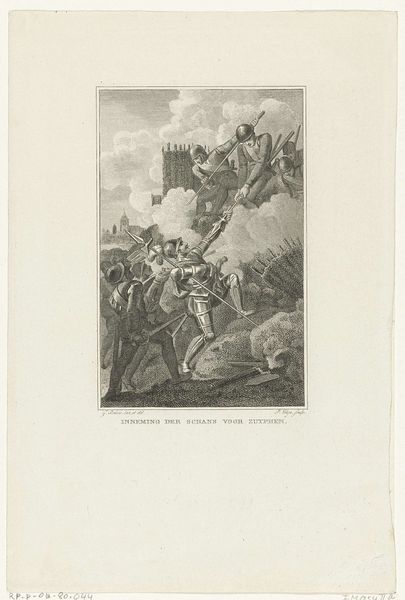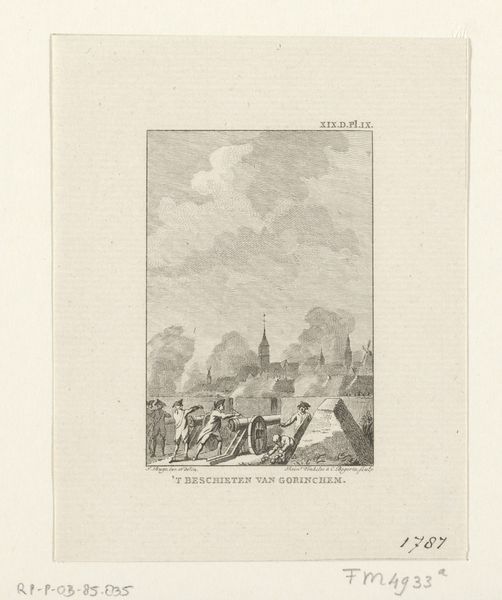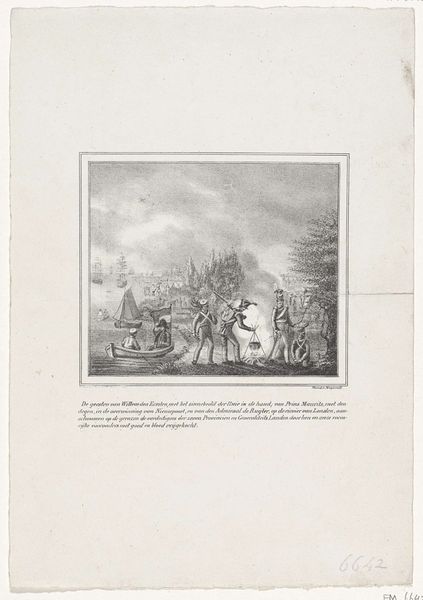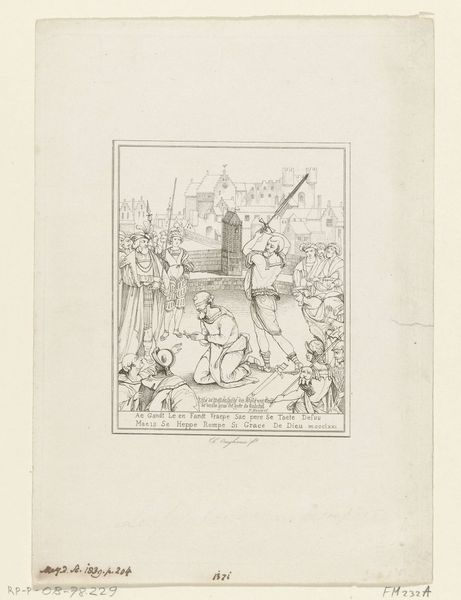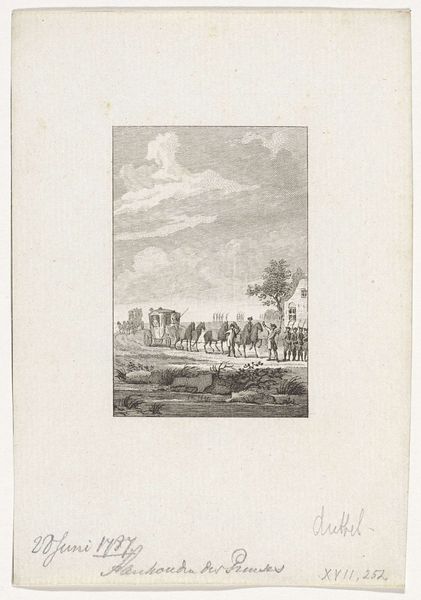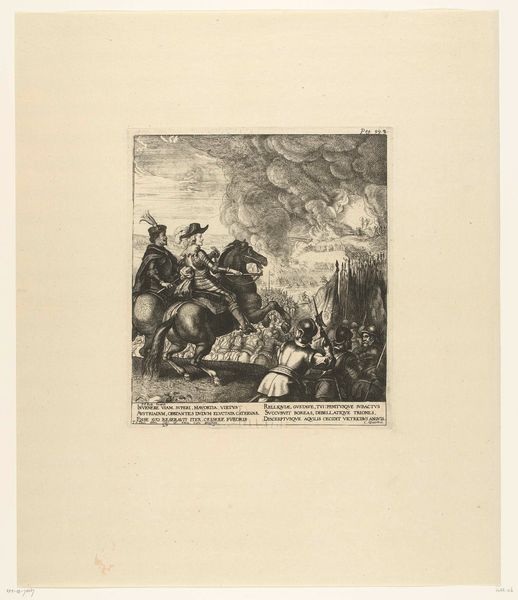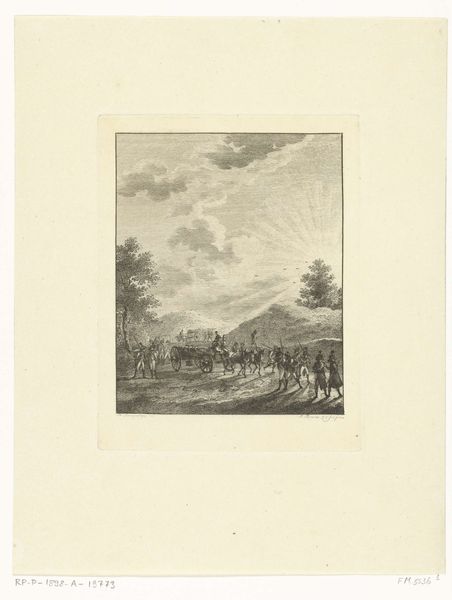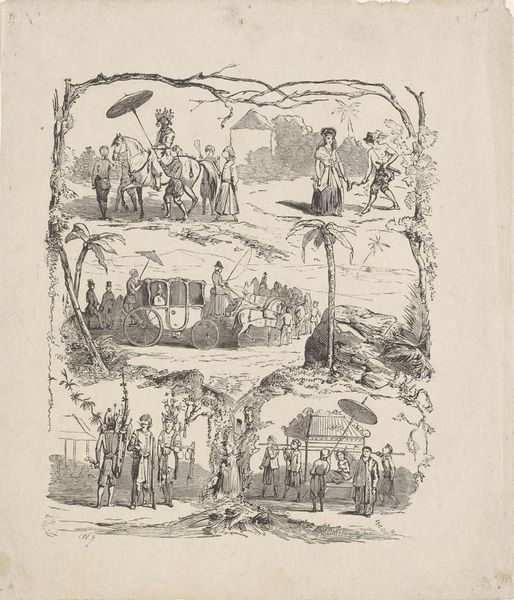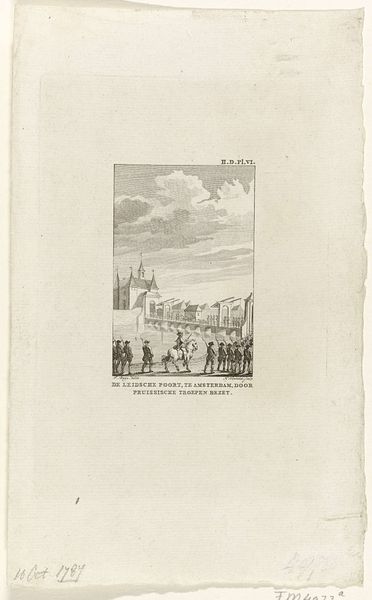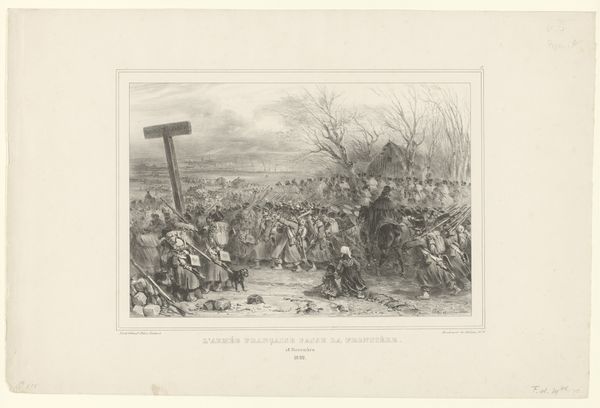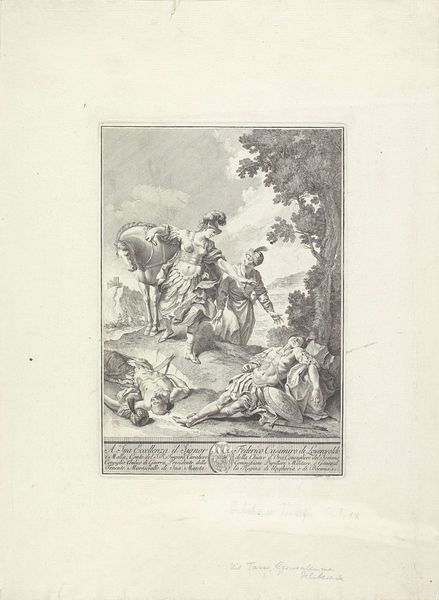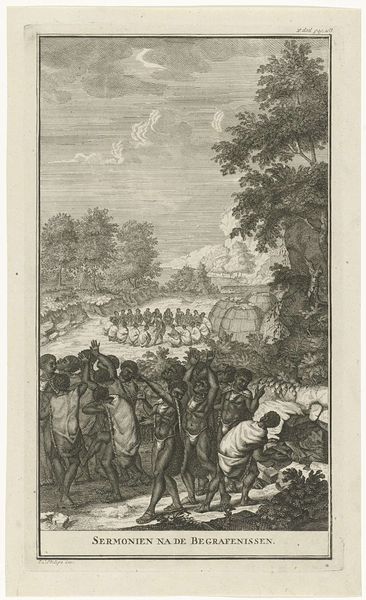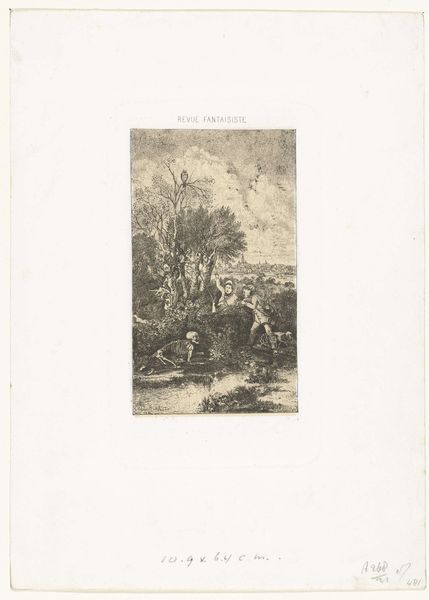
print, etching, paper, engraving
#
pencil drawn
# print
#
etching
#
old engraving style
#
paper
#
genre-painting
#
history-painting
#
engraving
Dimensions: height 228 mm, width 155 mm
Copyright: Rijks Museum: Open Domain
Curator: This print, "Gevechten bij Vaeshartelt, 1830," by Willem Schults, presents us with a dramatic clash from the Belgian Revolution. It appears to be an etching on paper. Editor: It’s quite stark, isn't it? The grey tones give it a very somber feel. You immediately sense the chaos of battle amidst the precise lines and detailed figures. The heavy reliance on line work must have been demanding. Curator: Indeed. Considering it is an etching, likely produced between 1830 and 1832, its creation involved significant labor. The original would have been painstaking: acid etching into metal to create the printing plate, inking, then each individual print made. How does that production impact its interpretation in your view? Editor: Seeing that meticulous craftsmanship definitely encourages reflection on how conflict is represented and consumed by the public. Think about the role images like these had in shaping political sentiments back then! Was it a readily reproduced piece designed to disseminate specific beliefs around the conflict? Curator: Absolutely, its public role would have been huge! Battle scenes romanticized heroism and vilified the enemy, forming narratives to sway public opinion. You’ll see the dead bodies right in the foreground... what a gruesome sight that served as a form of documentation for those at home who may have only understood conflict from tales of glory. Editor: It also points to an institutional framing; prints such as these entered collections of patriotic societies and academies which themselves become influential participants. The engraving serves to historicize this singular view into a narrative, and in effect a sort of propagandistic project unfolds from there! Curator: Examining the production materials highlights its intended reach to create that narrative...paper and ink make conflict palpable to citizens at all levels of wealth, creating investment to affect politics. Editor: Well, tracing its means of production has surely exposed an aspect of political agenda and dissemination which I feel like I could not have identified alone. Thanks for offering that alternate context! Curator: Likewise. Your comments encourage reflection on the distribution systems shaping public views! Let's investigate how similar works engage politically next.
Comments
No comments
Be the first to comment and join the conversation on the ultimate creative platform.
